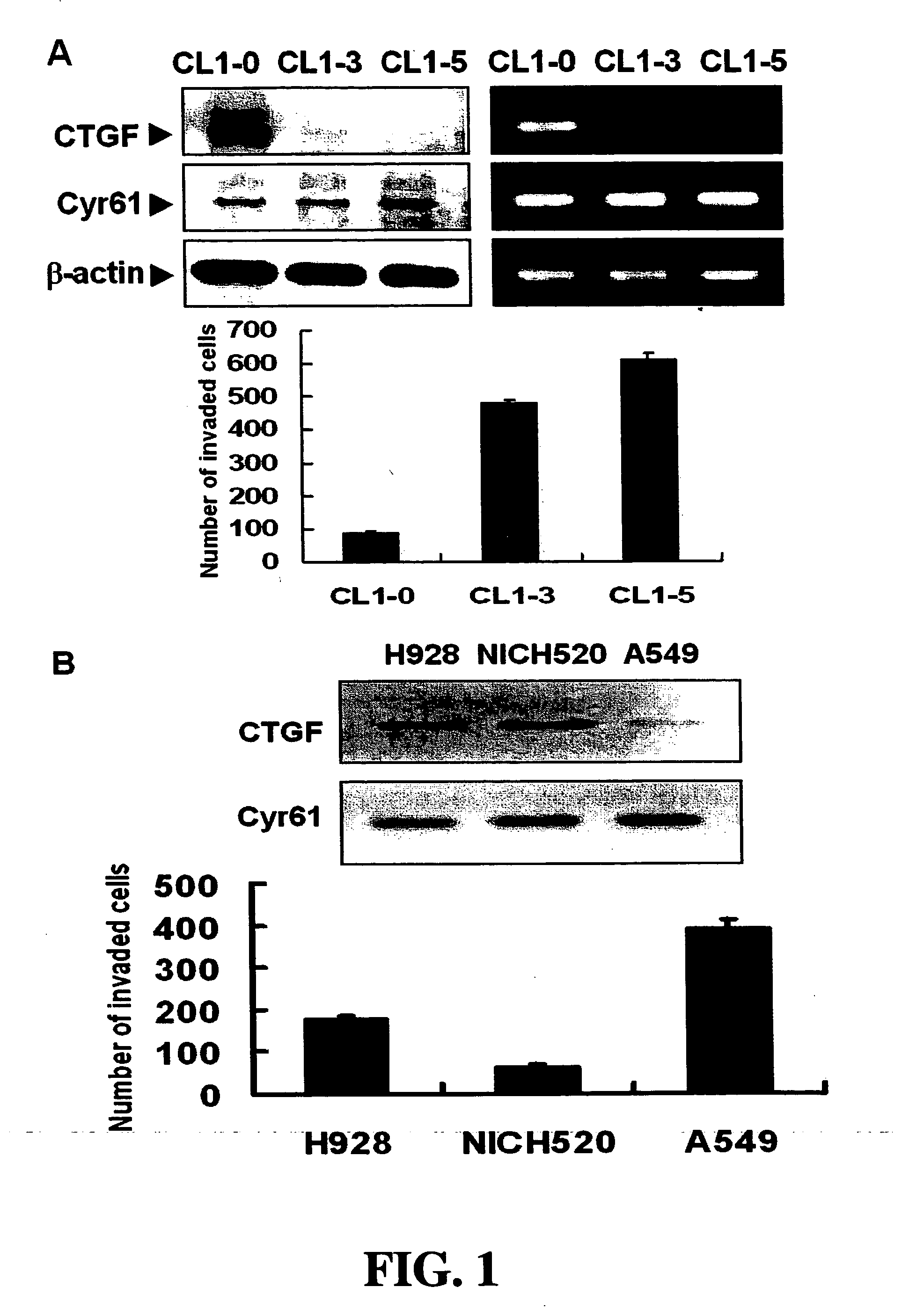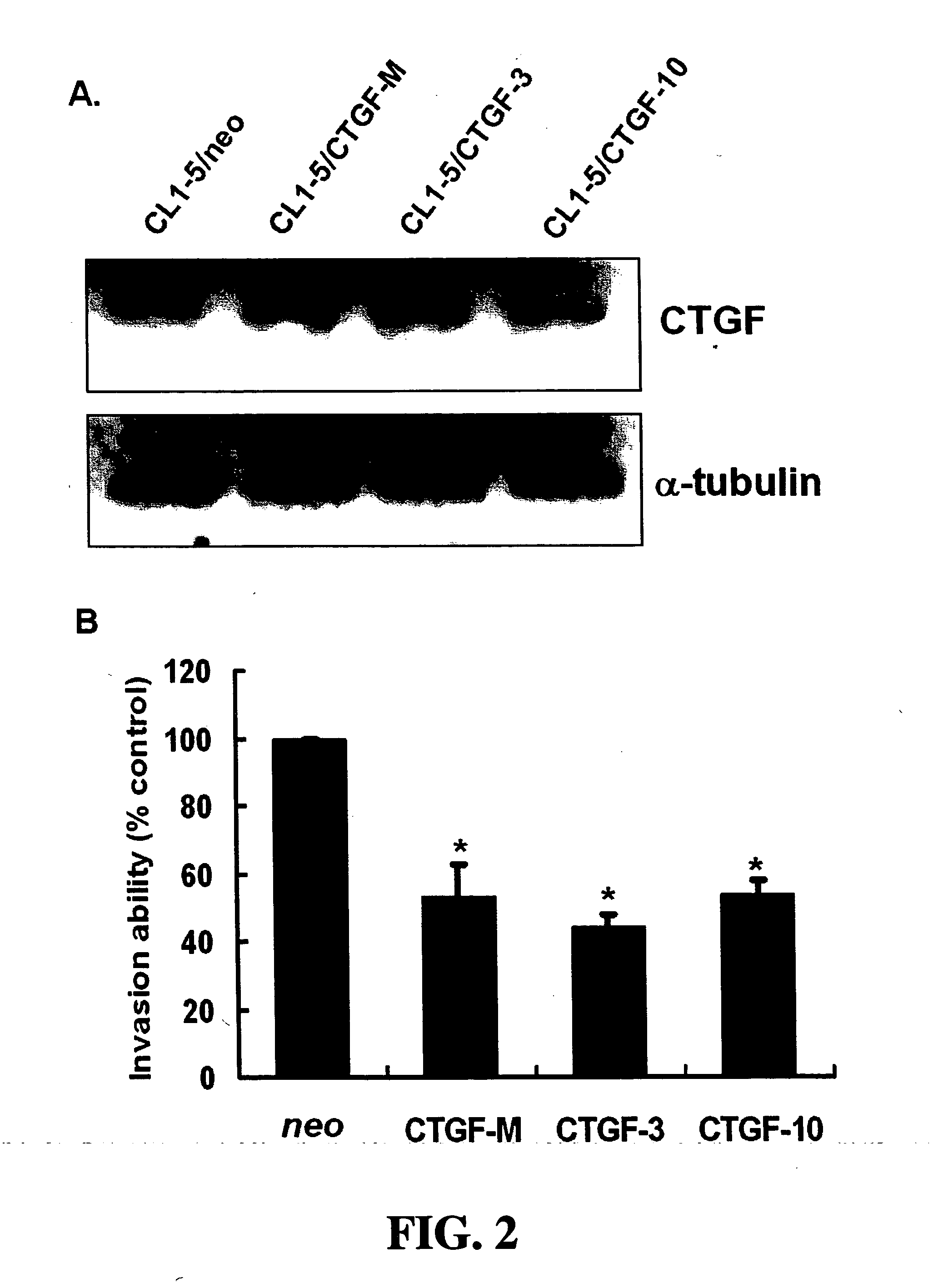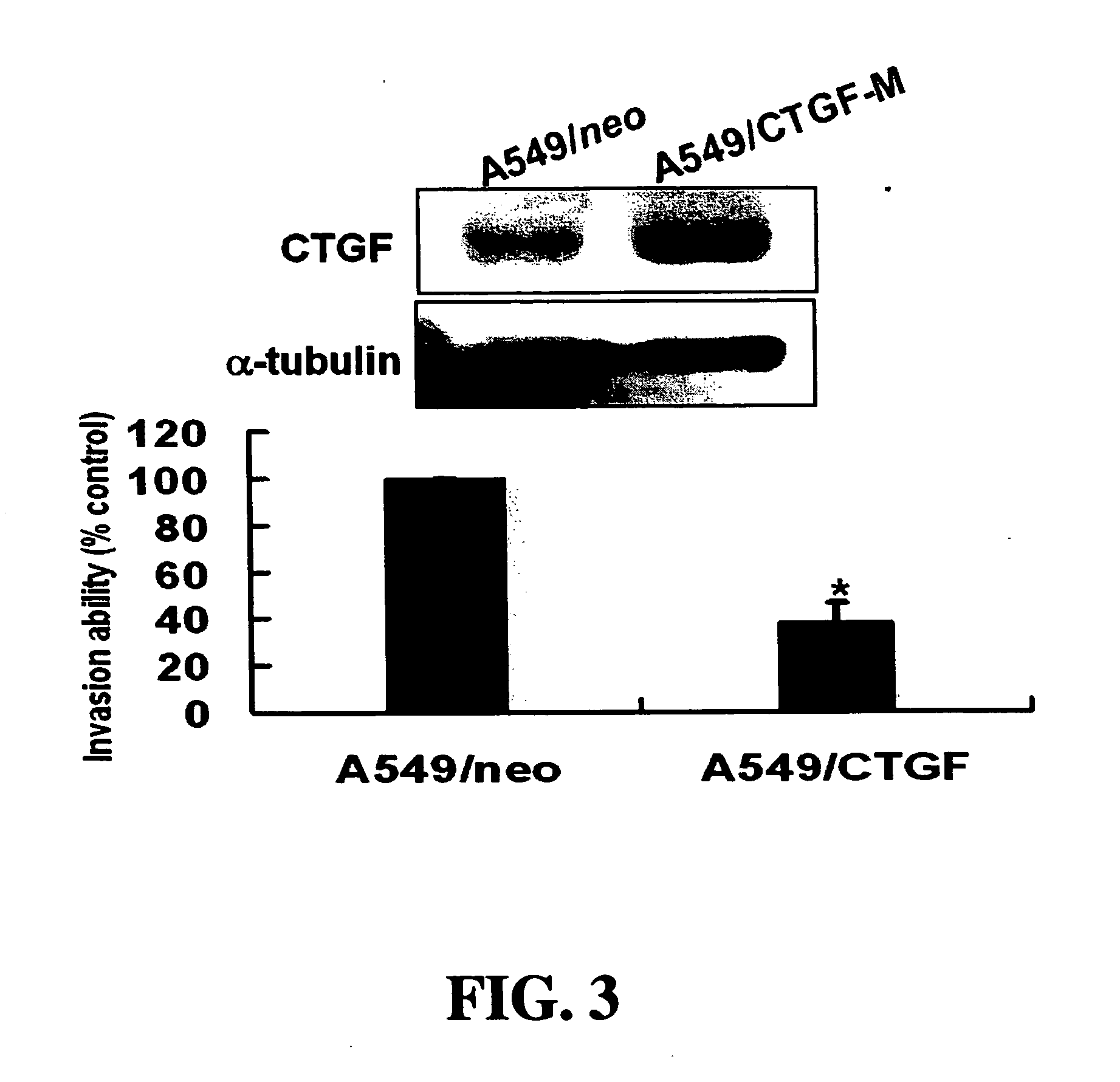Methods and compositions for diagnosing and suppressing metastasis thereof
a technology of metastasis and composition, applied in the field of methods and compositions for diagnosing and suppressing metastasis, can solve the problems of high risk and death rate of patients, unclear mechanisms of metastasis, and difficulty in treating metastatic cancer, so as to suppress the invasion ability of tumor cells, and increase the expression level of ctgf
- Summary
- Abstract
- Description
- Claims
- Application Information
AI Technical Summary
Problems solved by technology
Method used
Image
Examples
example 2
Overexpression of CTGF Suppresses Invasion and Metastasis in vitro
[0038] To clarify the direct role of CTGF expression in the invasiveness of lung adenocarcinoma cells, human CTGF cDNA expression vectors or control vectors are transfected into the highly invasive CL1-5 cells. After G418 selection, two single clones (CL1-5 / CTGF-3 and CL1-5 / CTGF-10) are isolated, a clonal mixture (CL1-5 / CTGF-M), and vector control clone (CL1-5 / neo), and then the levels of CTGF expression are assessed in each.
[0039] Construction of CTGF / wt Expression Plasmids: Total RNA is extracted from CL1-0 cells, and CTGF cDNA is cloned and amplified by RT-PCR with the primers of SEQ ID NO: 6 and SEQ ID NO: 7 (PubMed serial number XM-037056), and subcloned into a pcDNA3 / V5-His TOPO TA vector (Invitrogen, San Diego, Calif.). The CTGF-expressing vector CTGF / wt is used in transient and stable transfections of human lung adenocarcinoma cells in vitro.
[0040] Plasmid and Transient Transfection: The CTGF expression vec...
example 3
Truncated CTGF Expression in Transfected CL1-5 Cells and Invasiveness of the Cells
[0045] CTGF and other CCN proteins have a structure with several domains or modules. To determine which module participates in the inhibition of invasion, a series of CTGF deletion constructs are produced and characterized. Because CTGF is a secretory protein, the signal sequence at the amino-terminal end is retained and sequences at the carboxyl-terminal end are sequentially deleted.
[0046] Construction of CTGF / wt Expression Plasmids and CTGF Deletion Mutants: The CTGF-expressing vector CTGF / wt is prepared according to the procedure in Example 2, and other three serial deletion mutants of CTGF are generated by deleting the CT domain (SEQ ID NO: 2); the CT and TSP-1 domains; or the CT, TSP-1, and VWC domains. These constructs are designated CTGF / d3, CTGF / d2, or CTGF / d1, respectively (FIG. 5A). Deletion constructs are generated with the reverse primer SEQ ID NO: 8 in combination with the forward primer...
example 4
Overexpression of CTGF Suppresses Invasion and Metastasis in vivo
[0048] Experimental Metastasis: Control vector- or CTGF-transfected tumor cells (CL1-5 / CTGF-M or A549 / CTGF-M) are prepared according to the procedures in Example 2, and cells are washed and resuspended in PBS. Subsequently, a single-cell suspension containing 106 cells in 0.1 mL of PBS is injected into the lateral tail vein of 6-week-old male SCID mice (supplied by the animal center in the College of Medicine, National Taiwan University). Each clonal cell line is injected into 10 mice. The mice are killed after 8 weeks. (A preliminary study in this animal model indicates that CL1-5 cells develope numerous lung metastasis nodules by 8 weeks.) All organs are examined for metastasis formation. The lungs are removed, weighed, and fixed in 10% formalin. The number of lung tumor colonies is counted under a dissecting microscope. Representative lung tumors are removed, fixed, and embedded in paraffin. Embedded tissue is sect...
PUM
| Property | Measurement | Unit |
|---|---|---|
| thick | aaaaa | aaaaa |
| pore size | aaaaa | aaaaa |
| volume | aaaaa | aaaaa |
Abstract
Description
Claims
Application Information
 Login to View More
Login to View More - R&D
- Intellectual Property
- Life Sciences
- Materials
- Tech Scout
- Unparalleled Data Quality
- Higher Quality Content
- 60% Fewer Hallucinations
Browse by: Latest US Patents, China's latest patents, Technical Efficacy Thesaurus, Application Domain, Technology Topic, Popular Technical Reports.
© 2025 PatSnap. All rights reserved.Legal|Privacy policy|Modern Slavery Act Transparency Statement|Sitemap|About US| Contact US: help@patsnap.com



